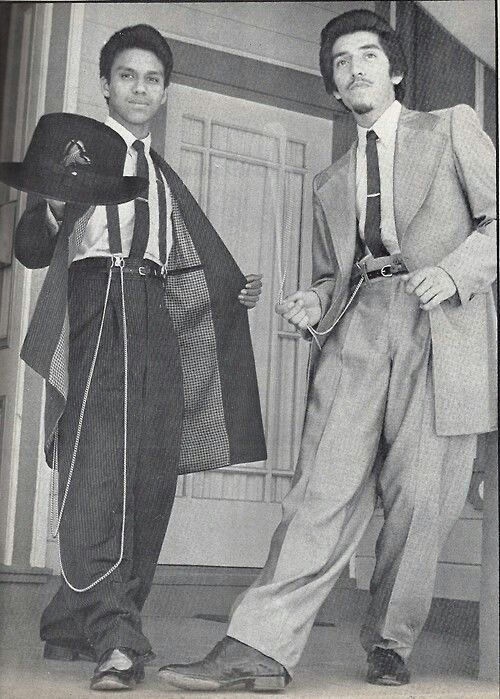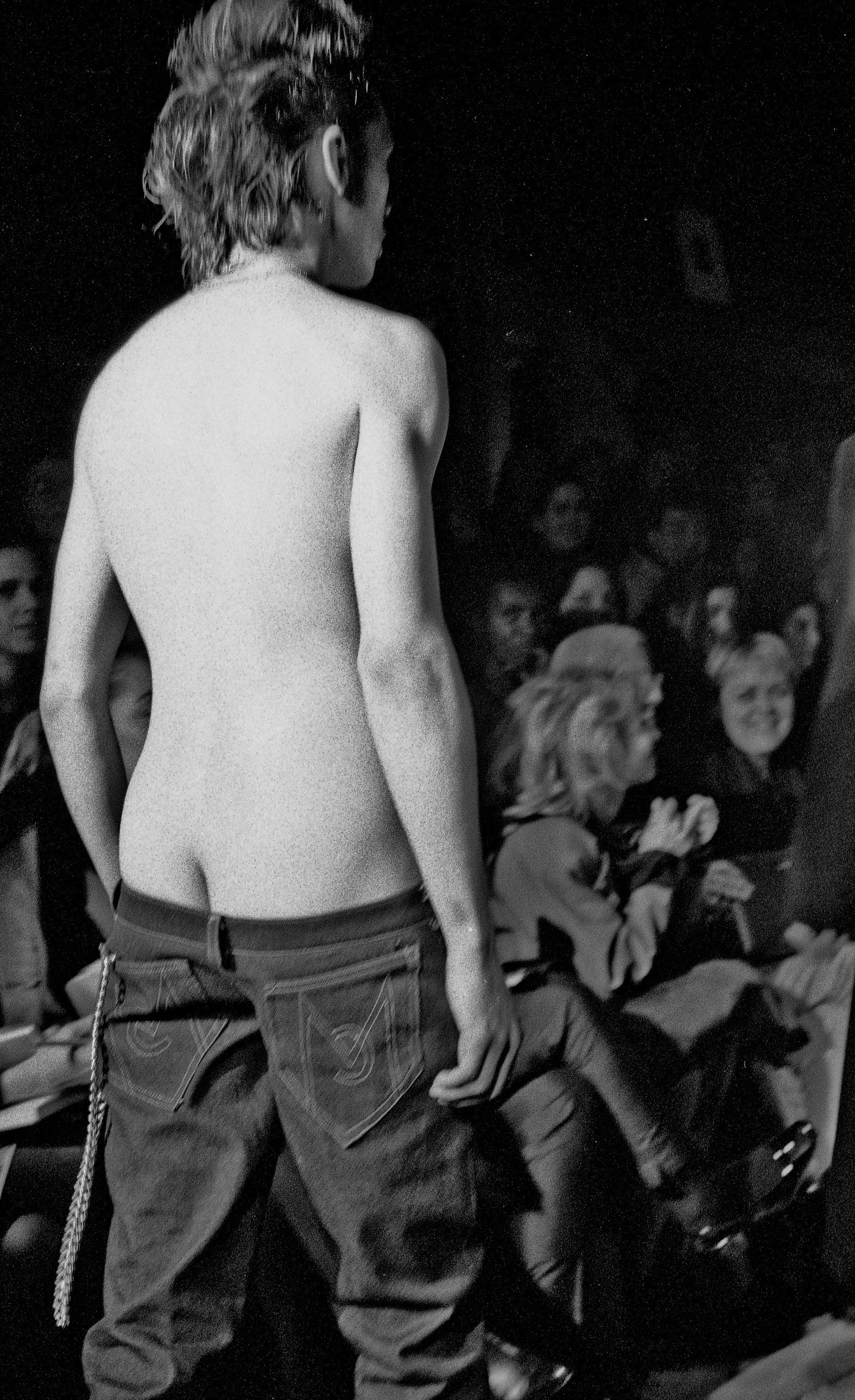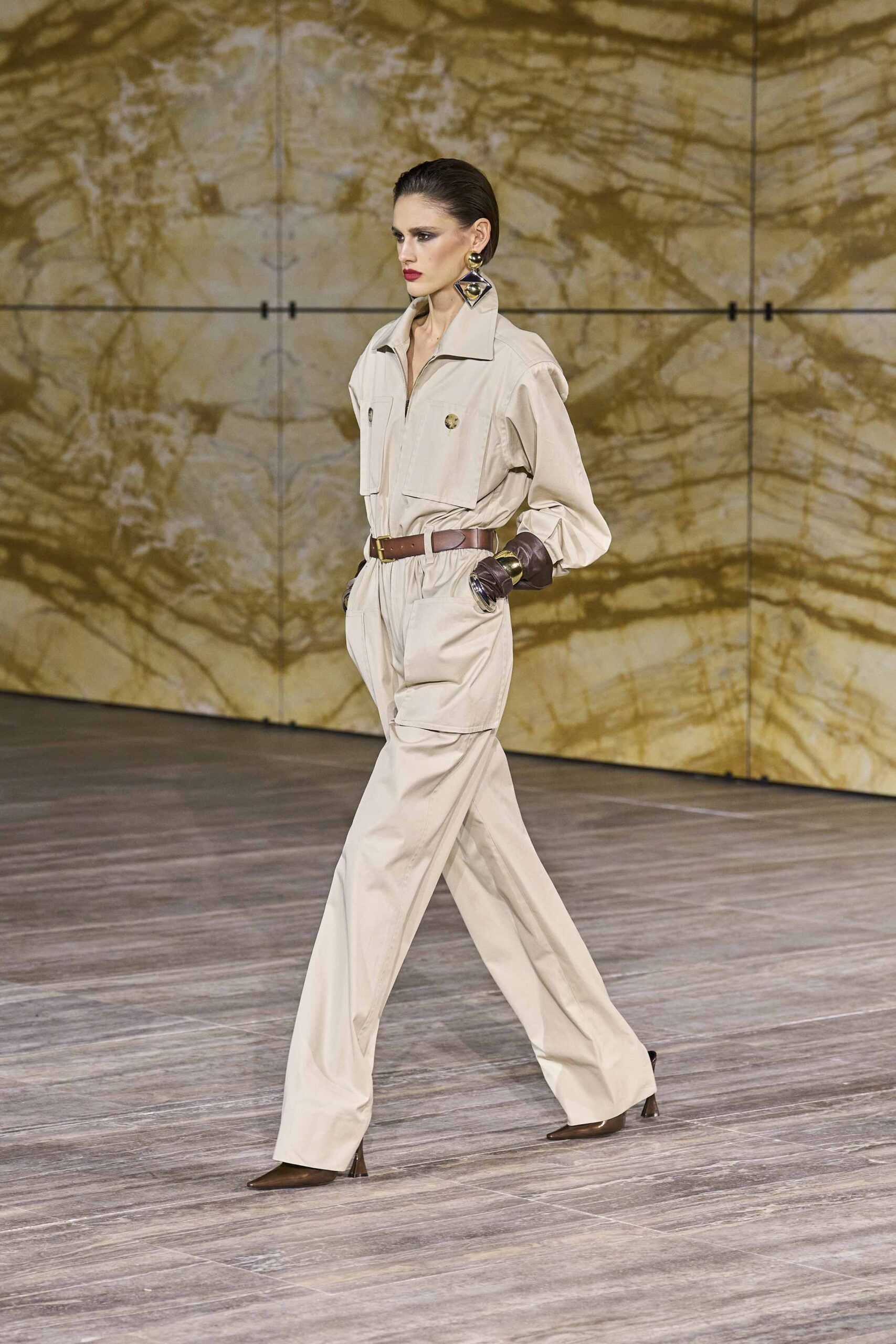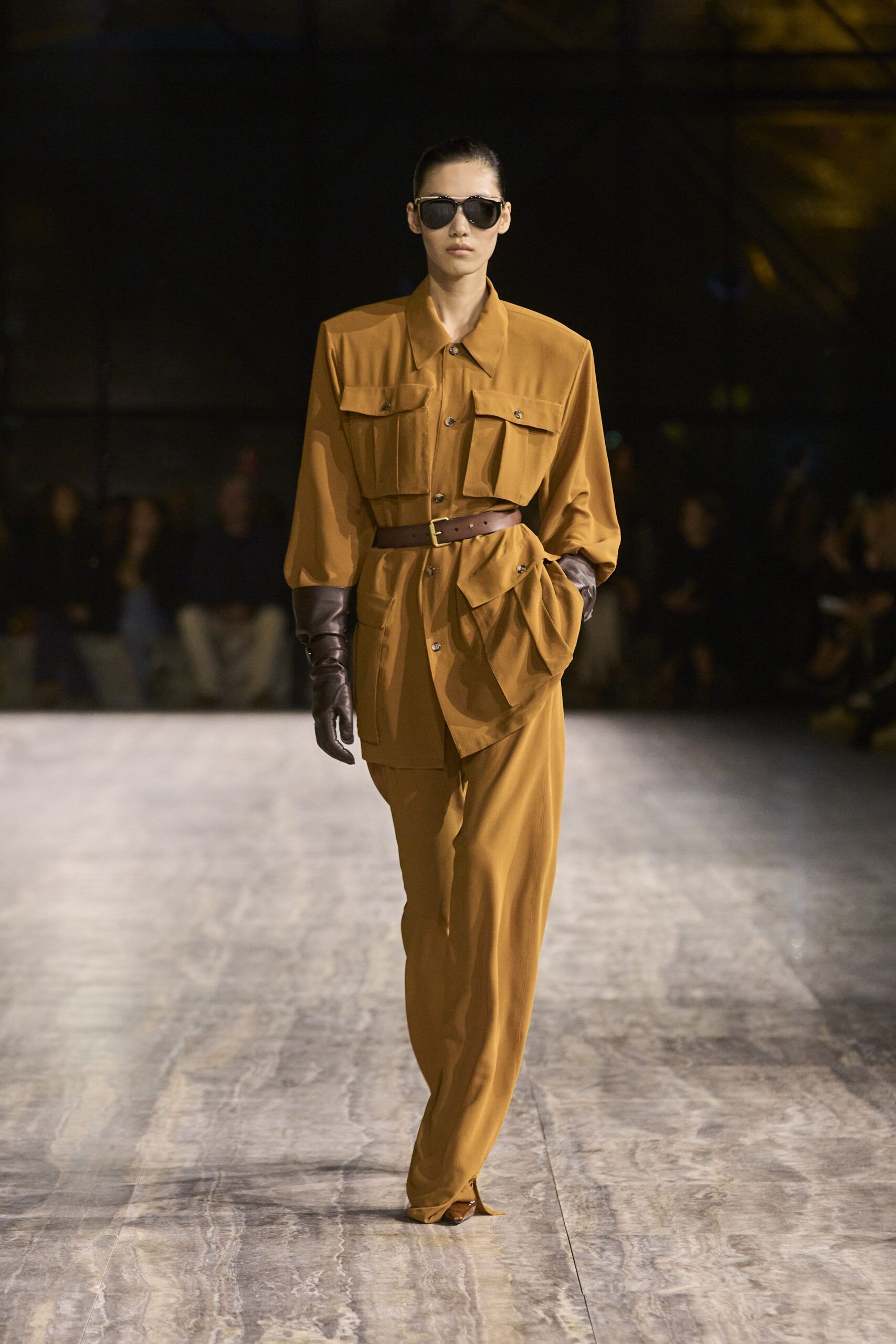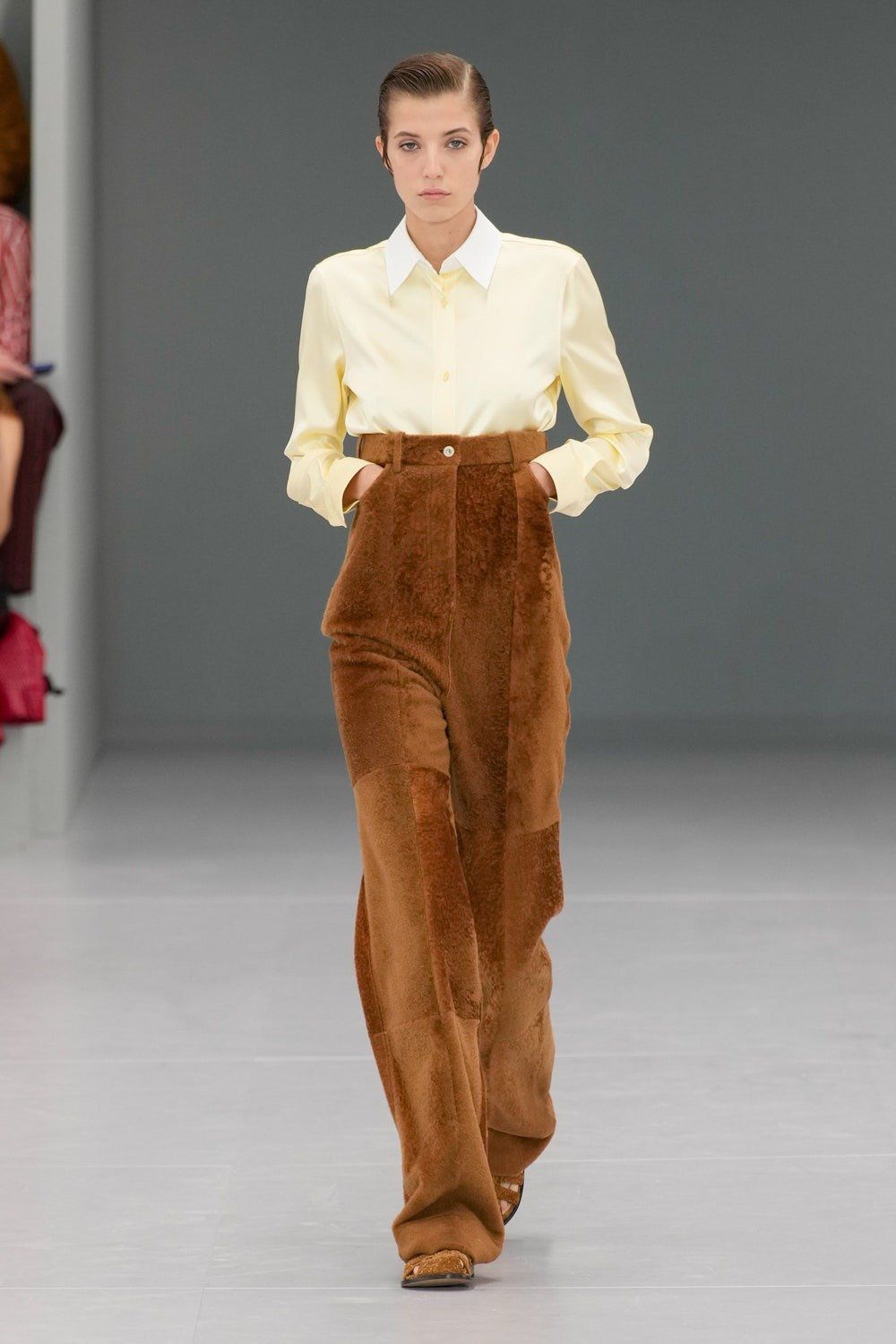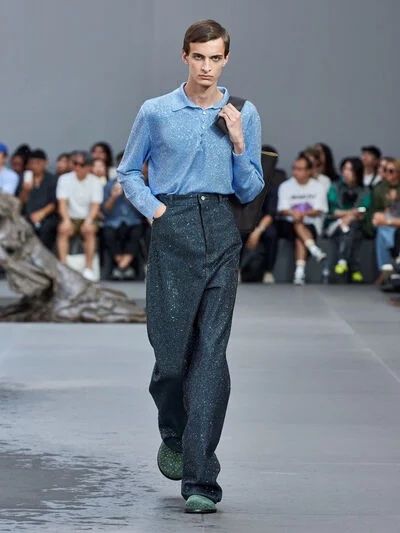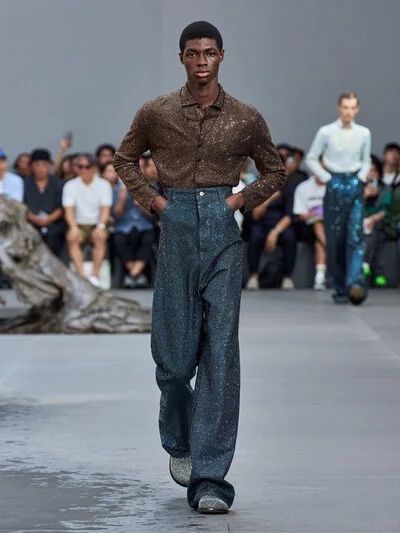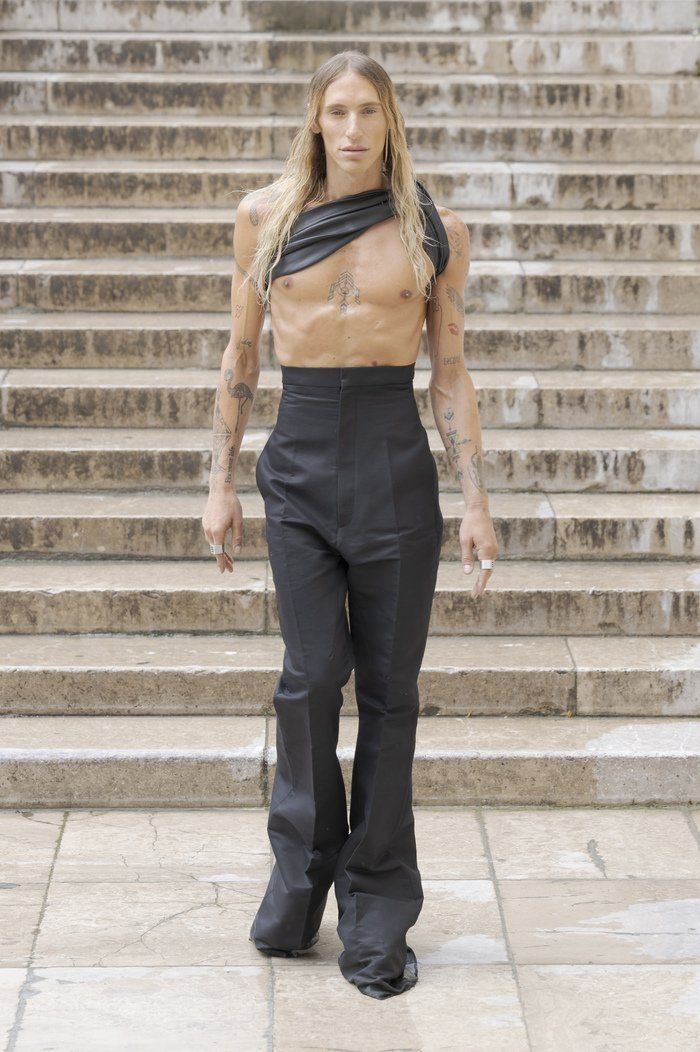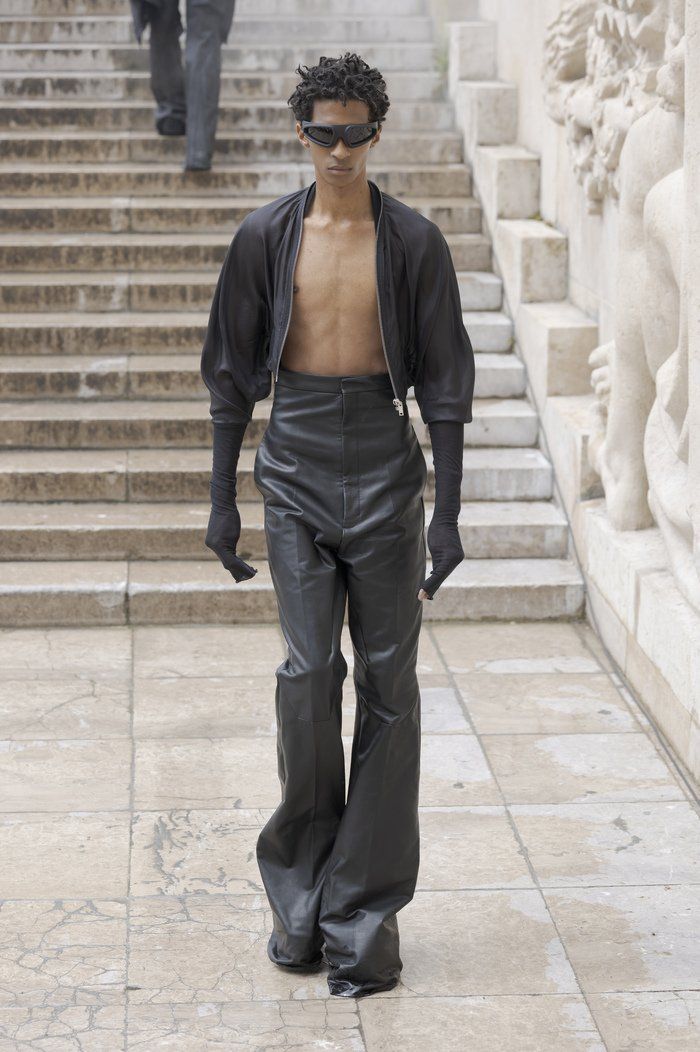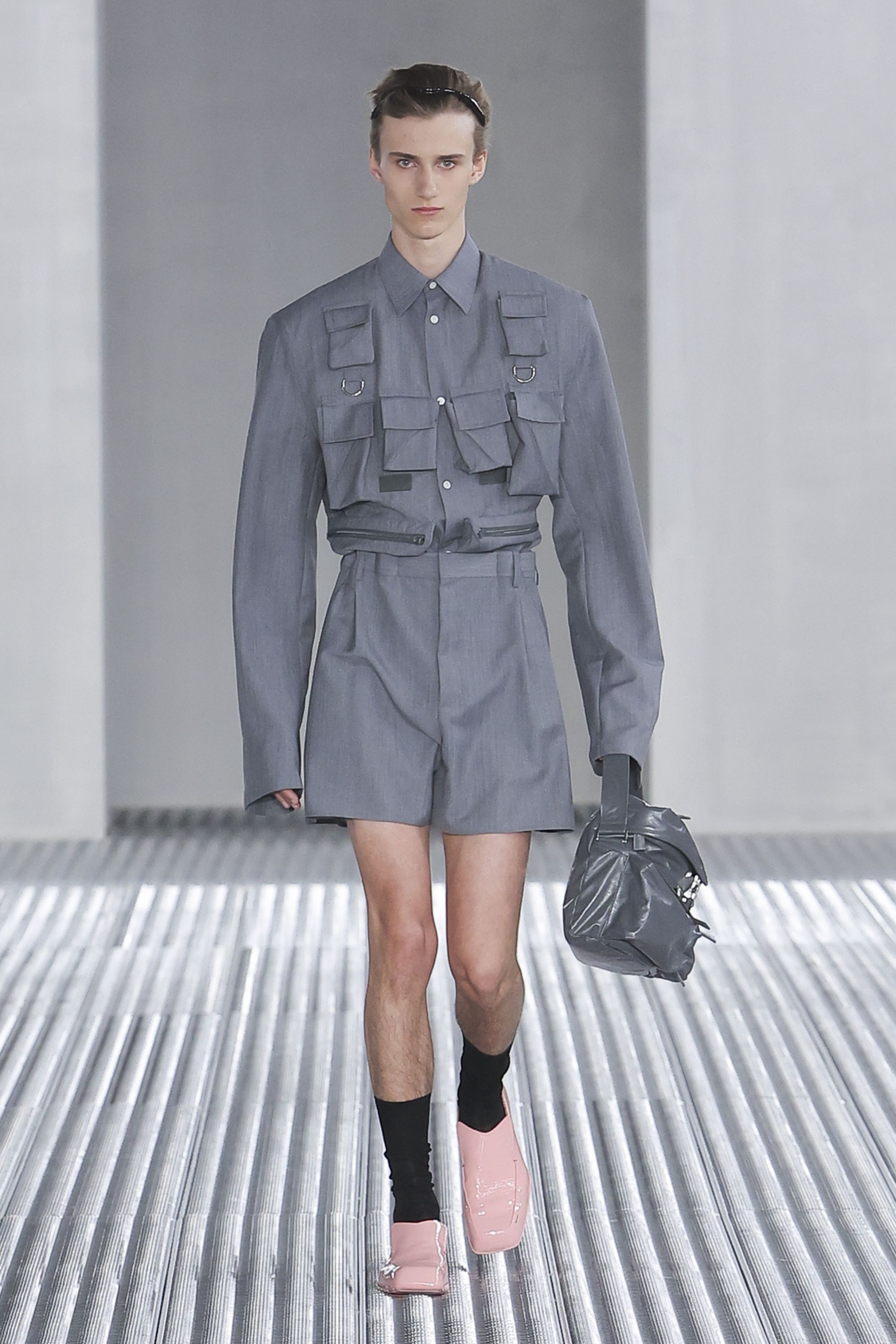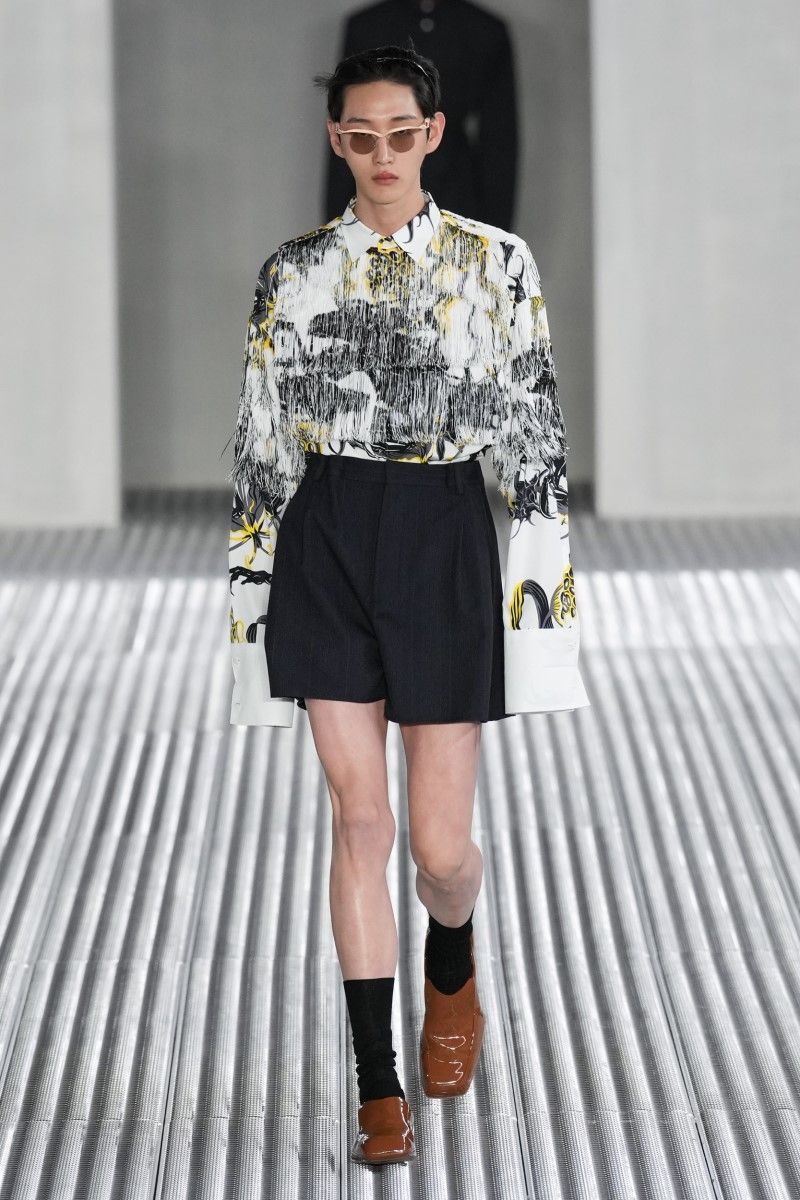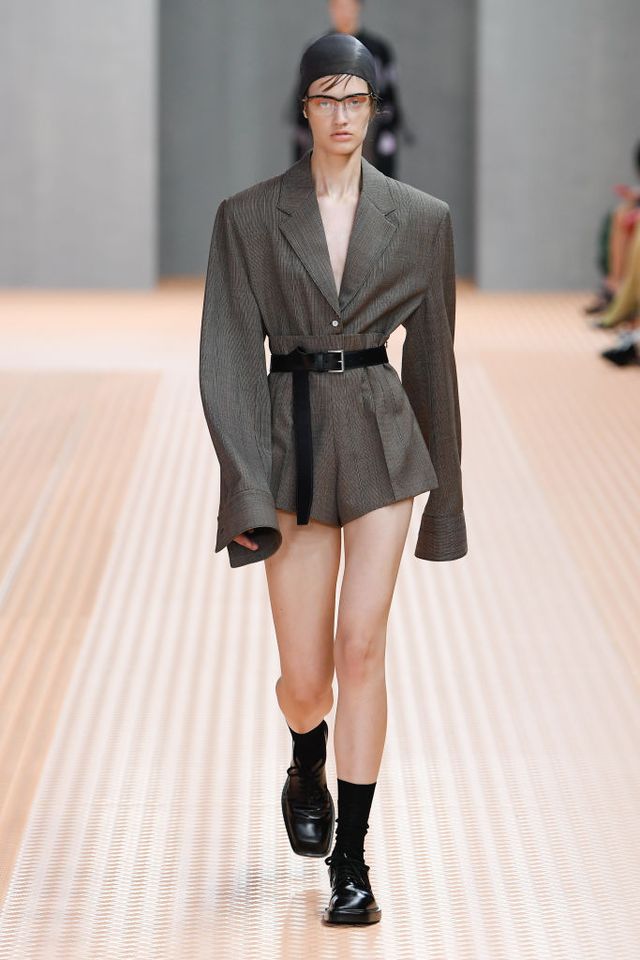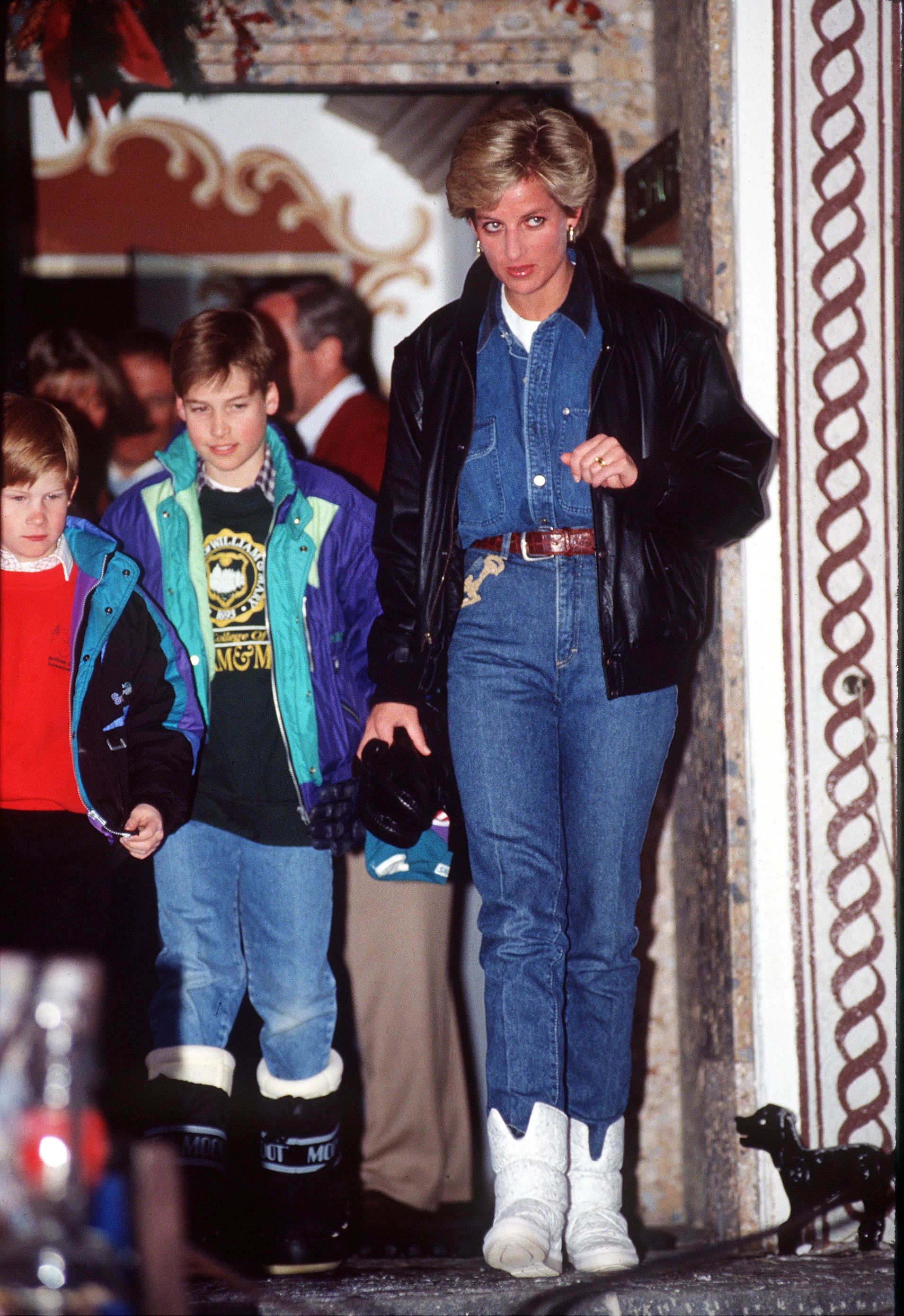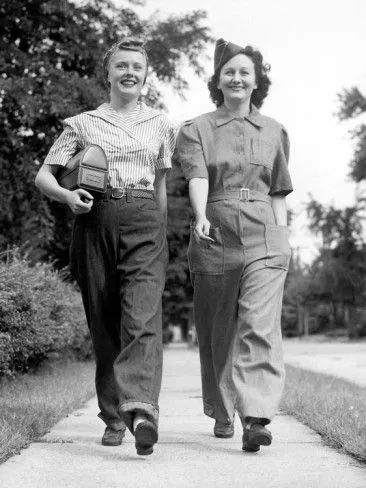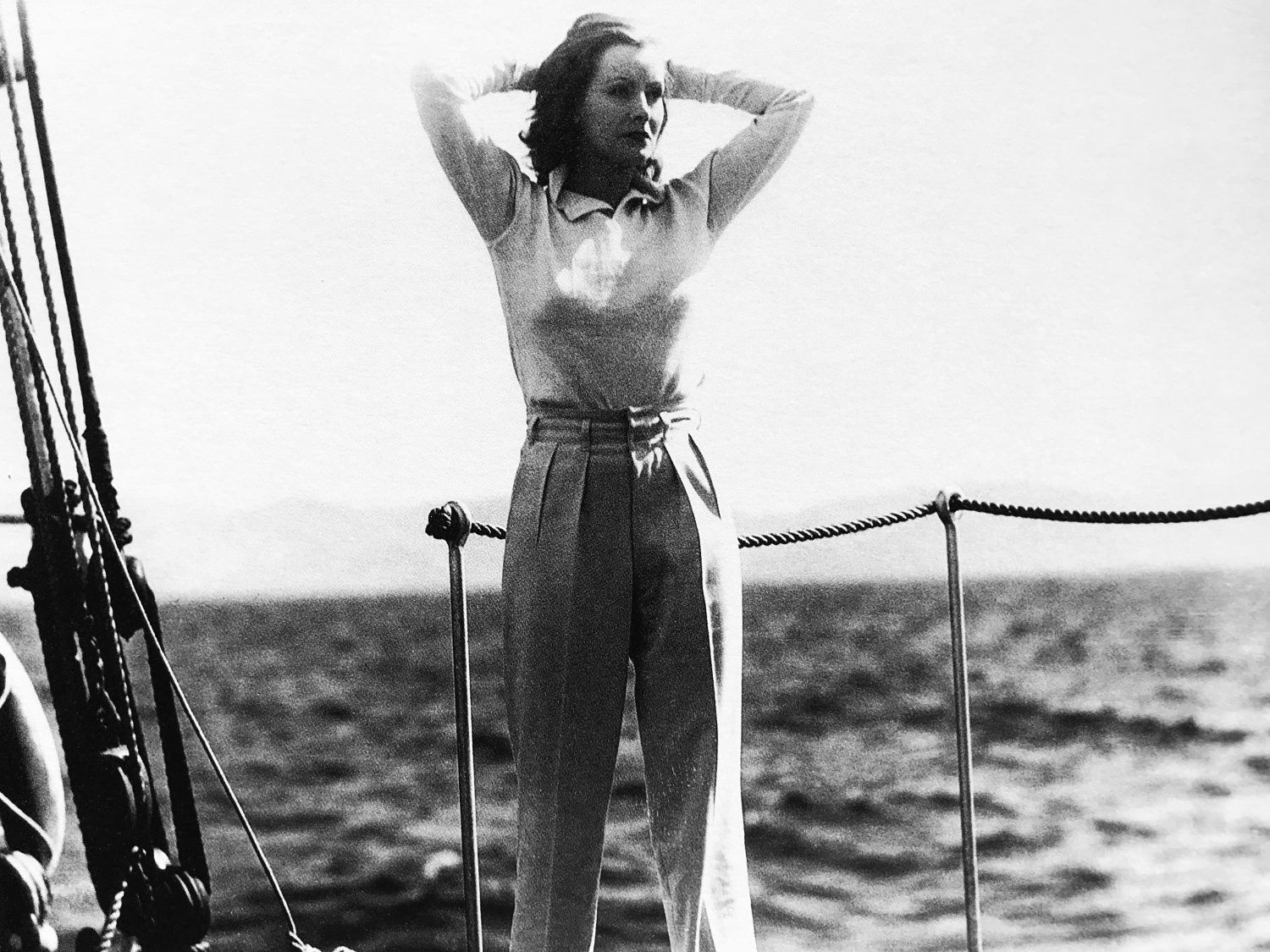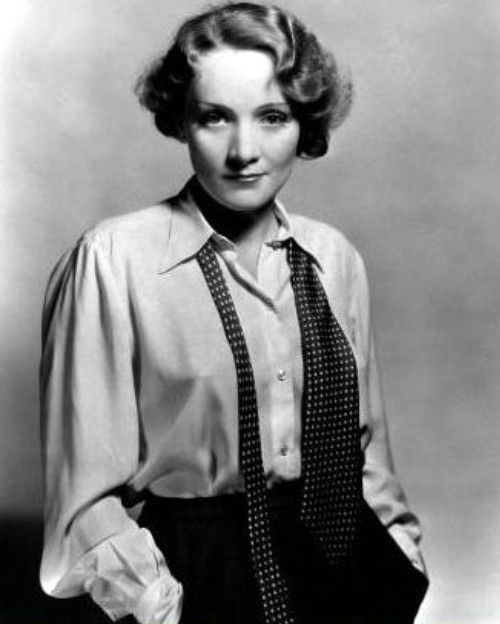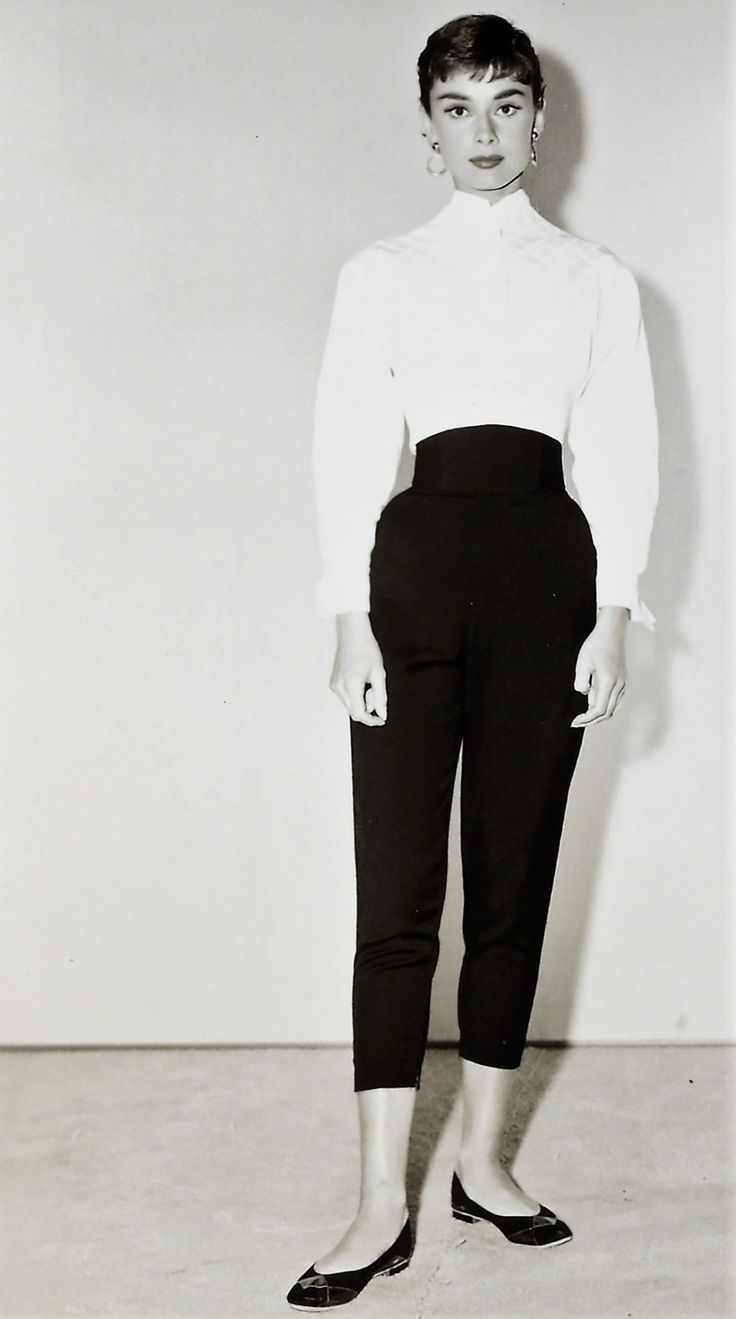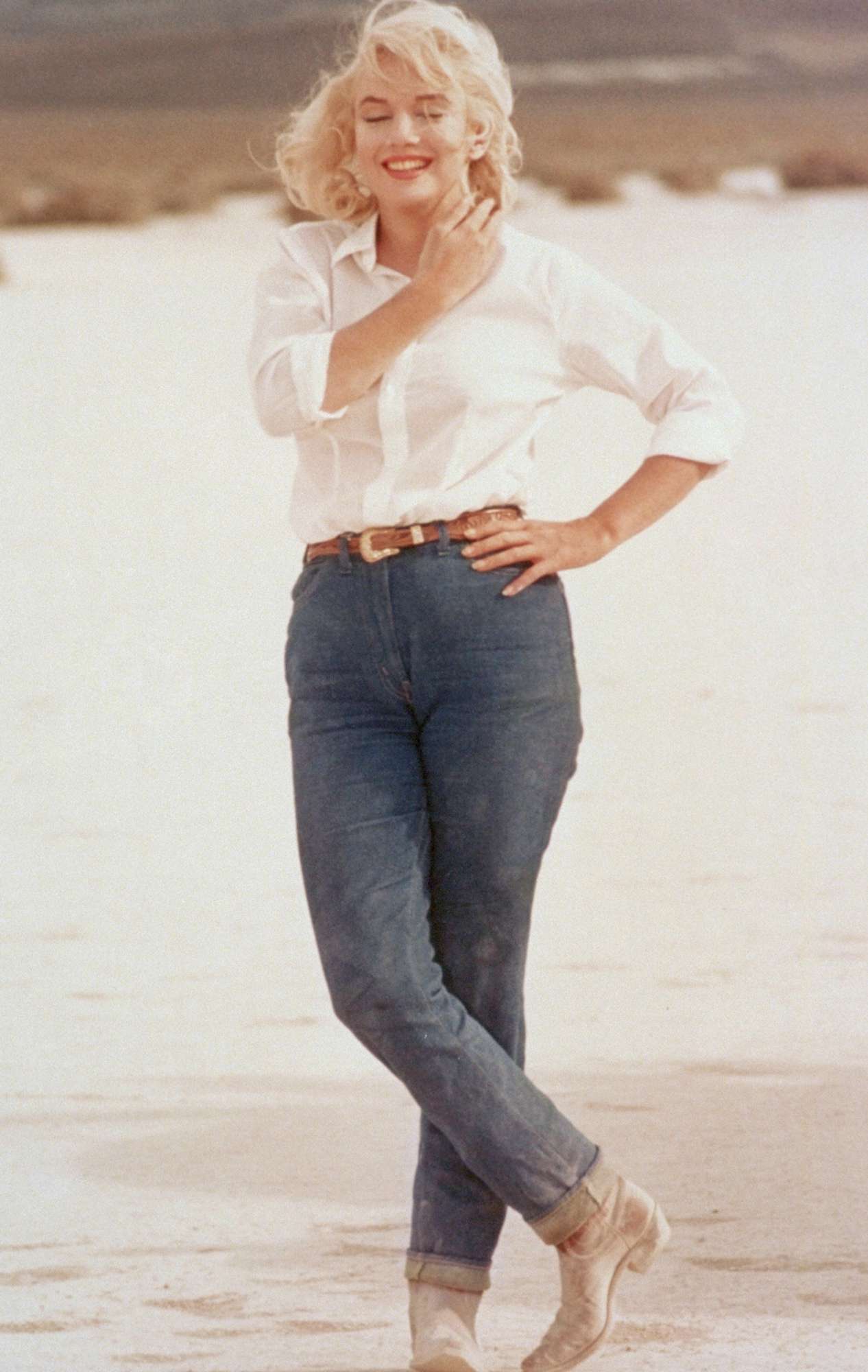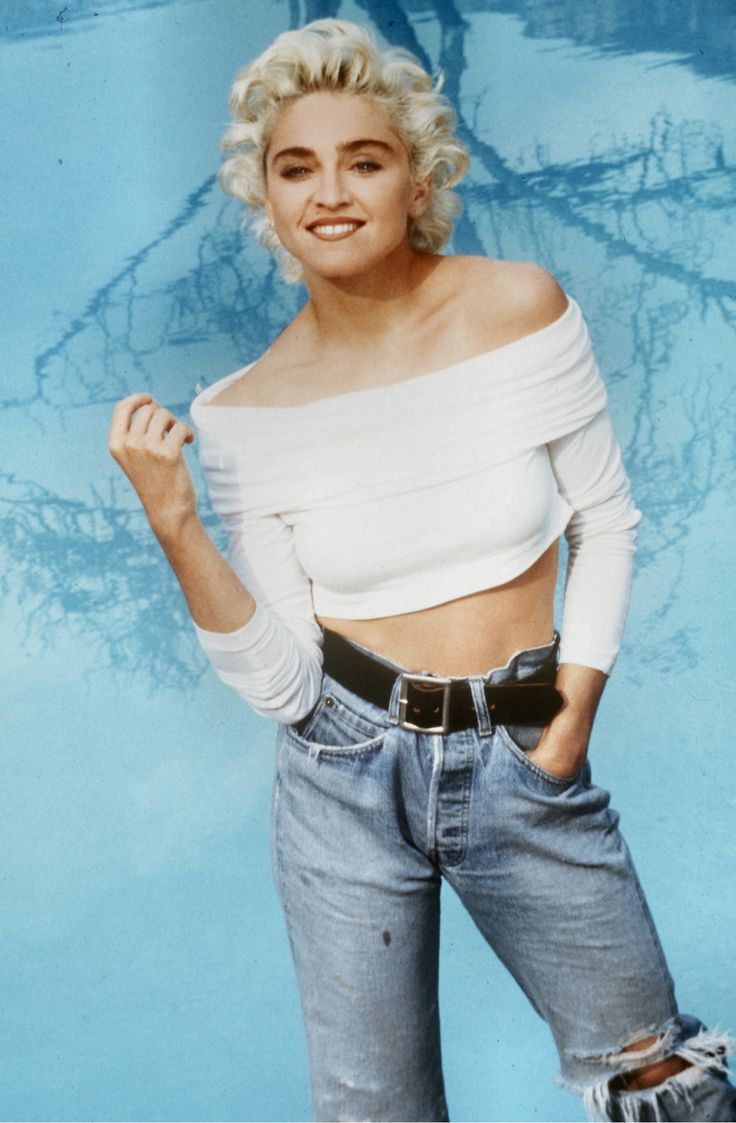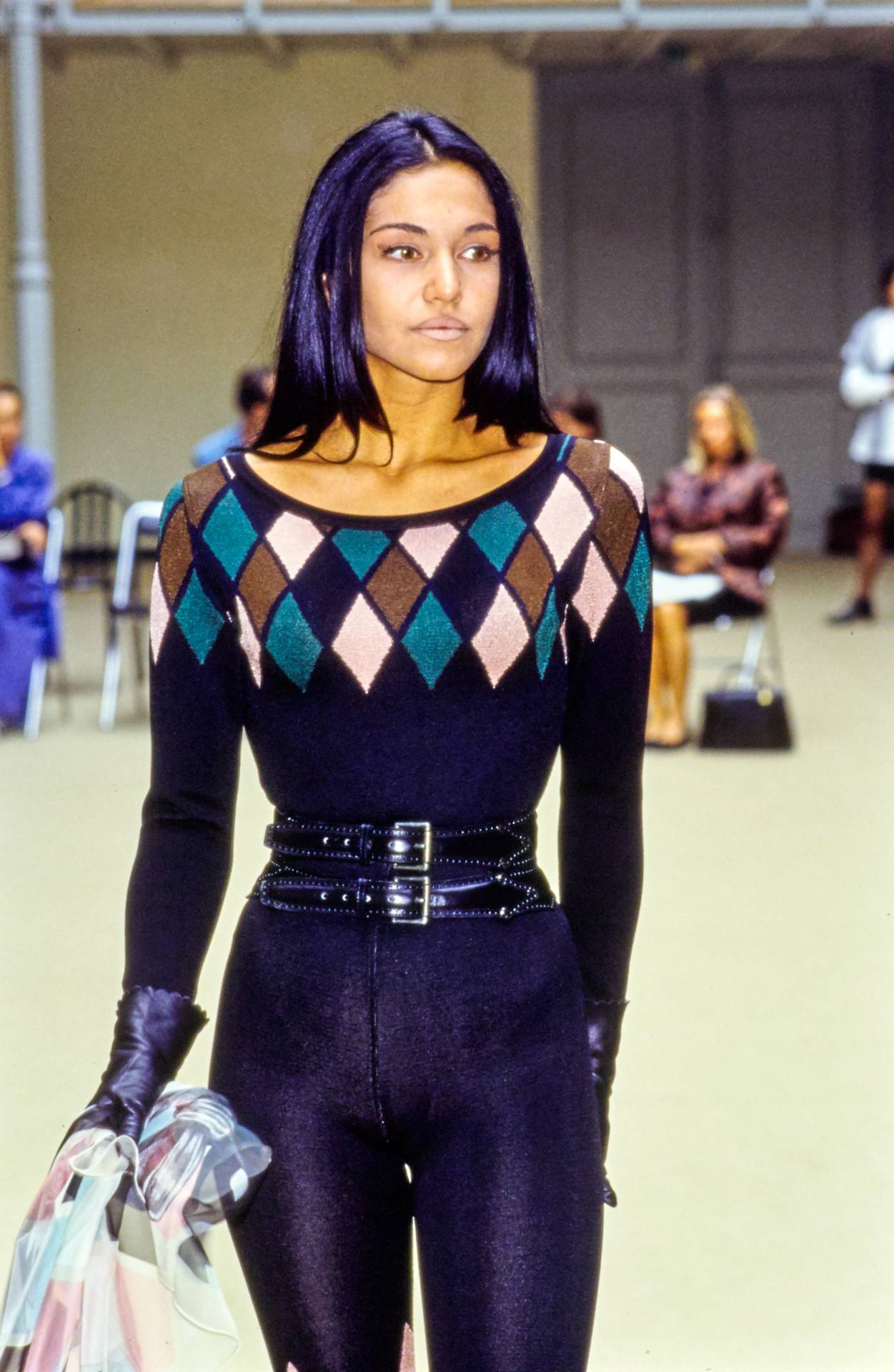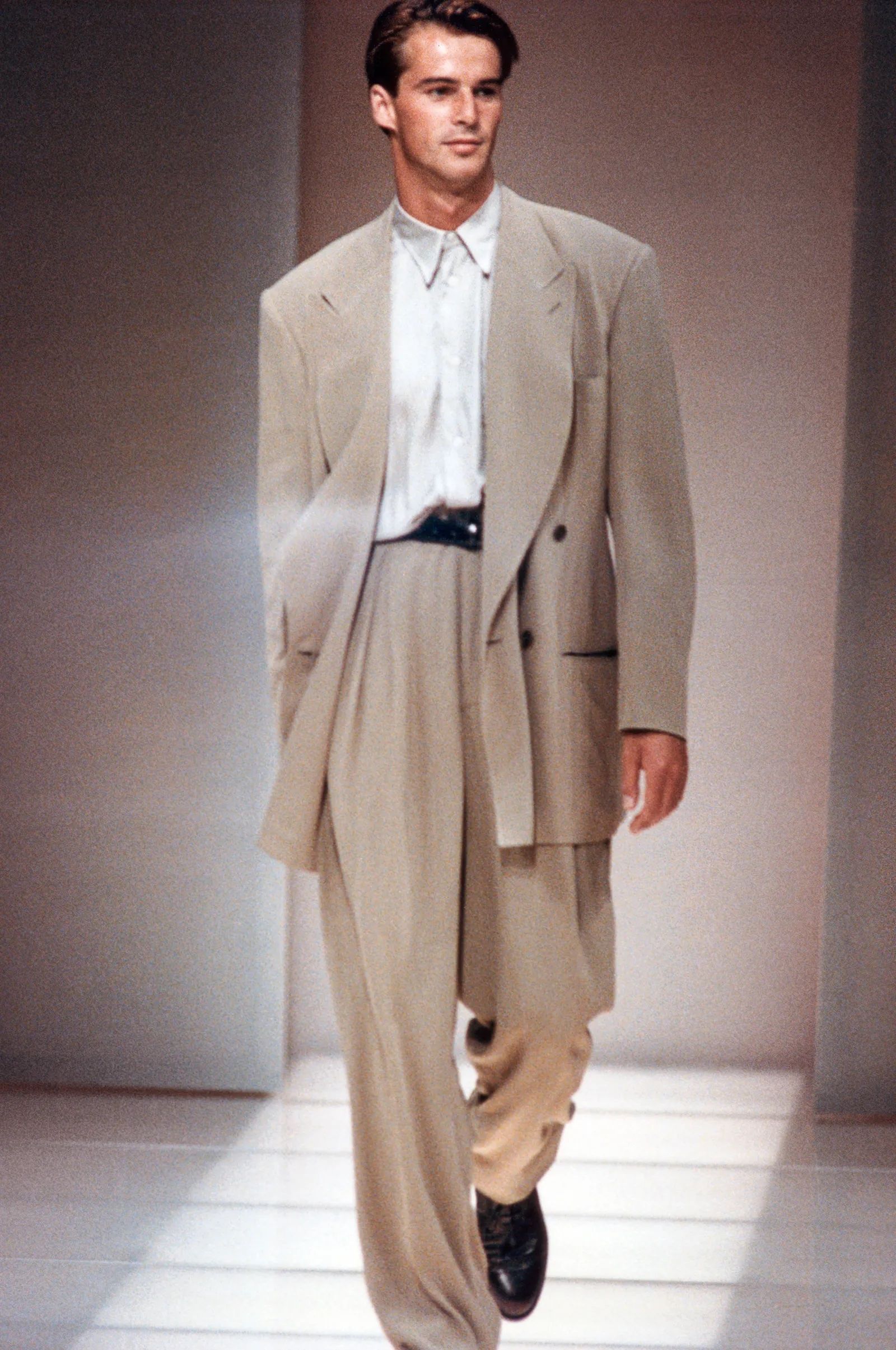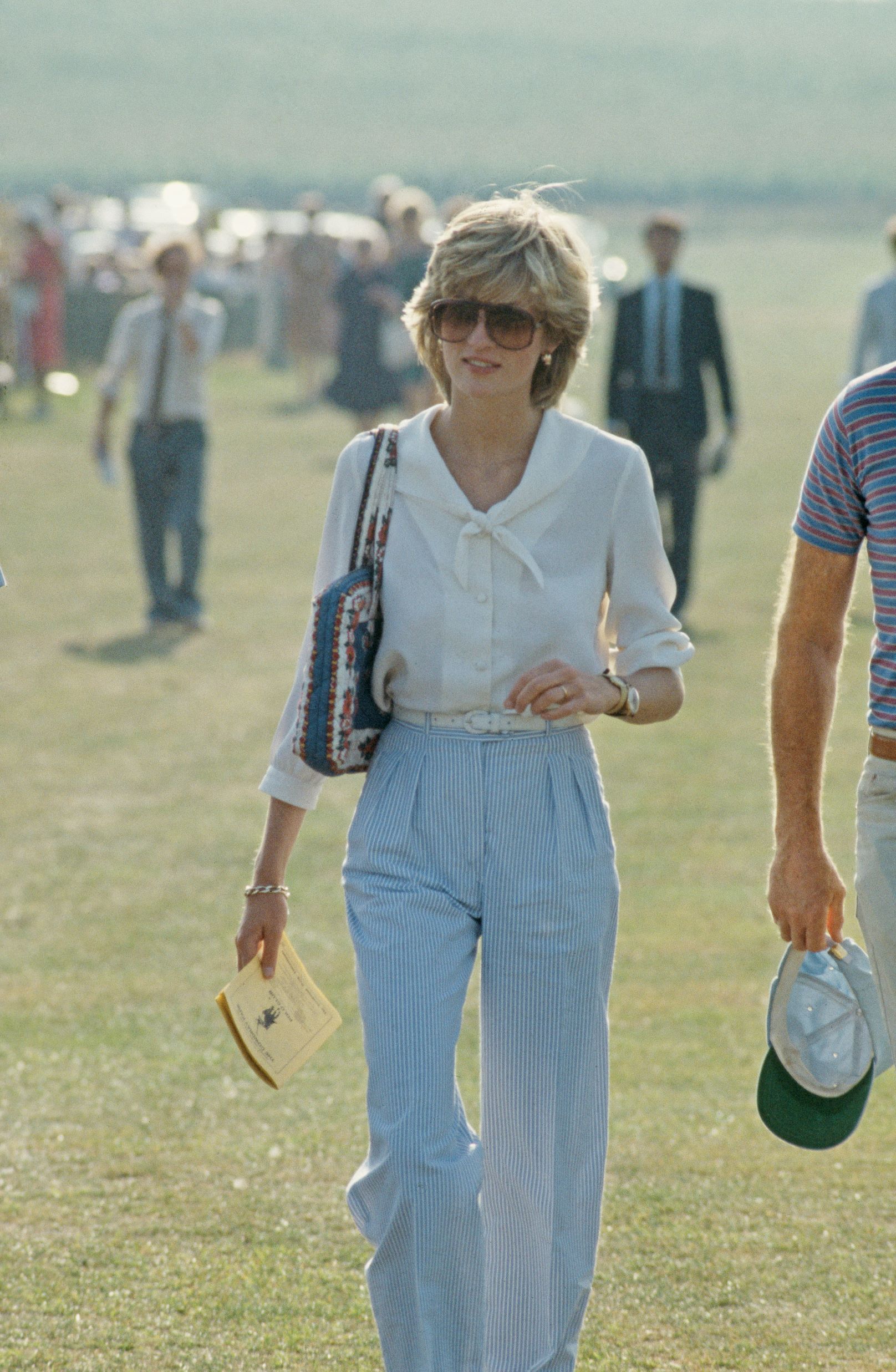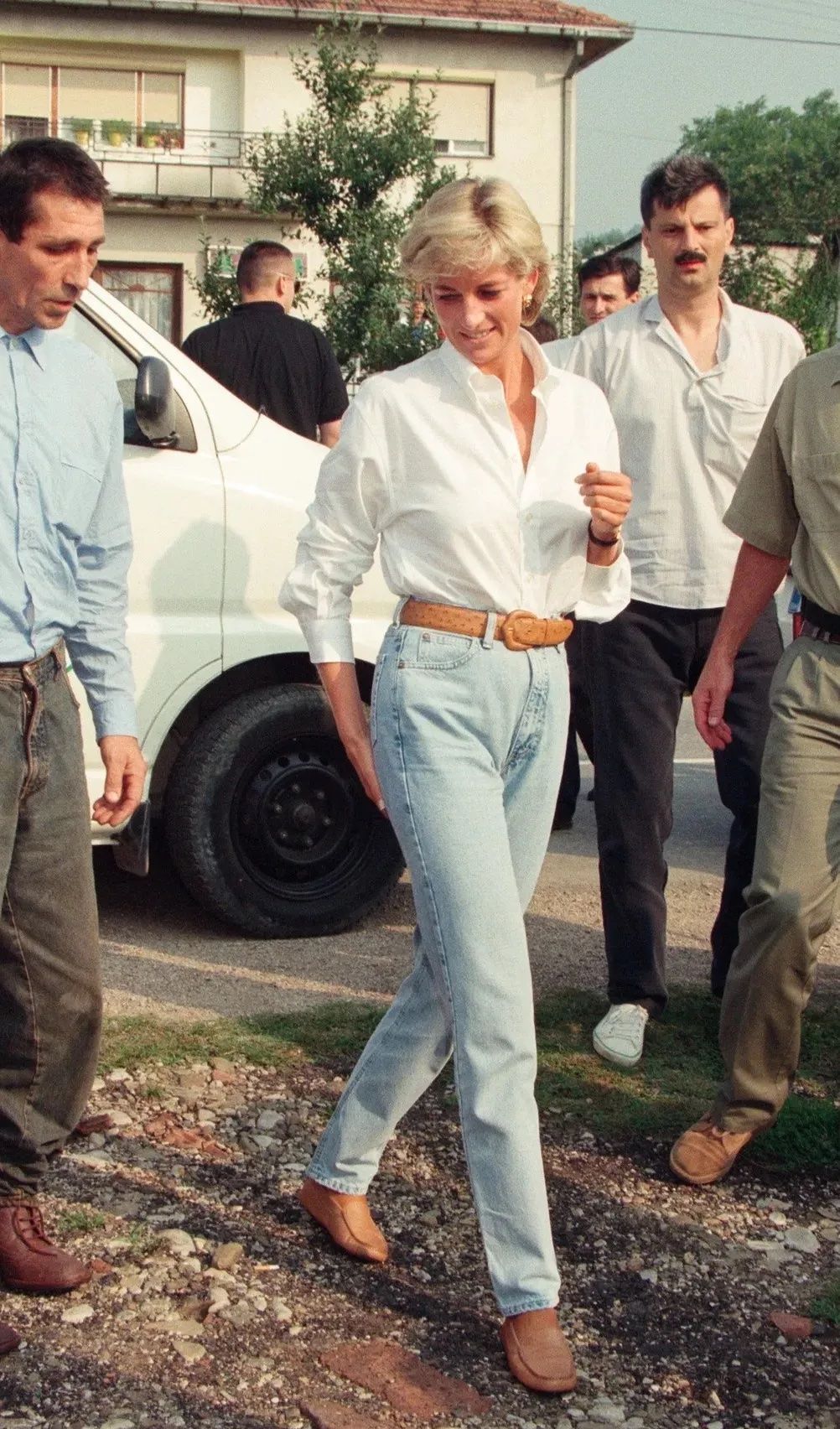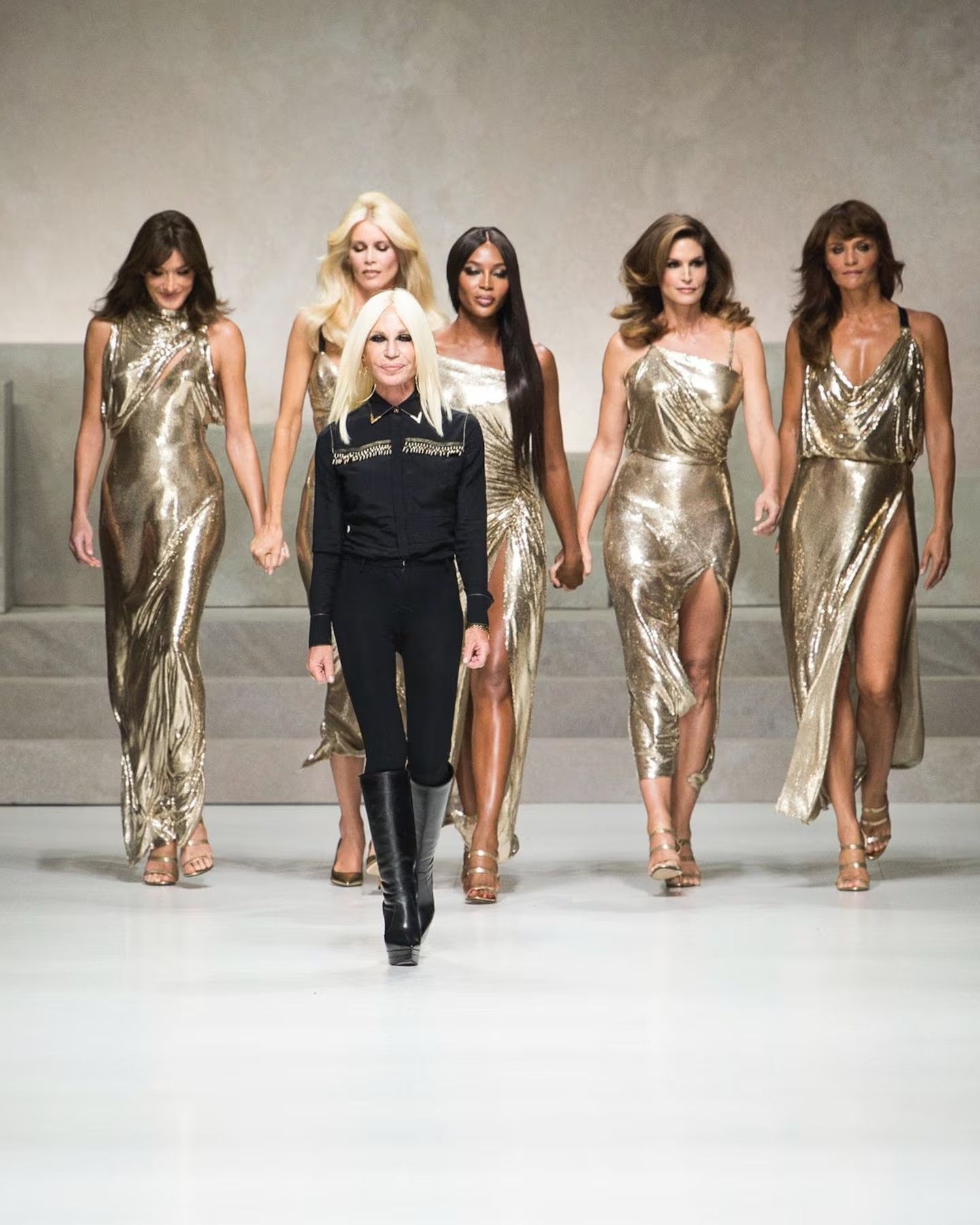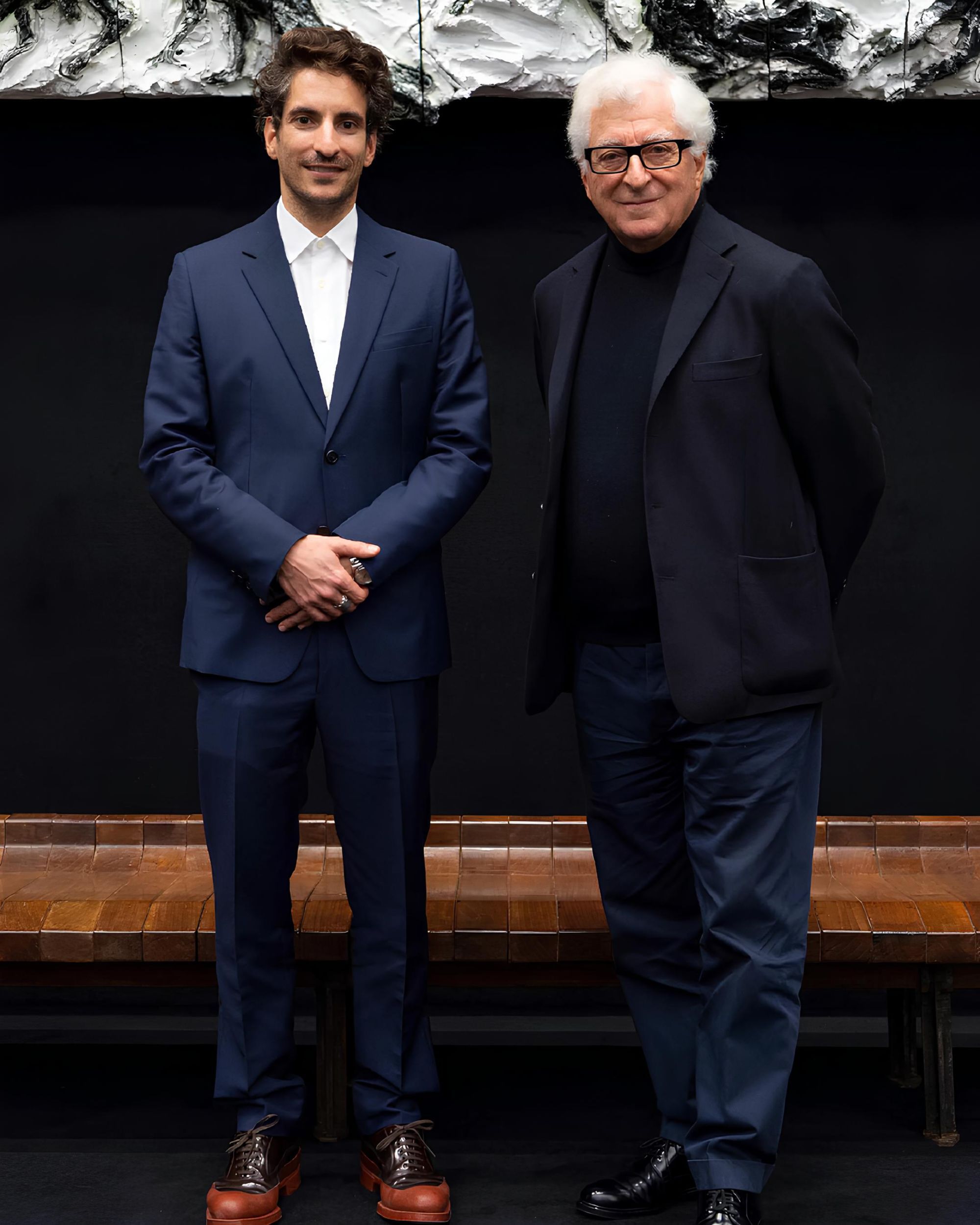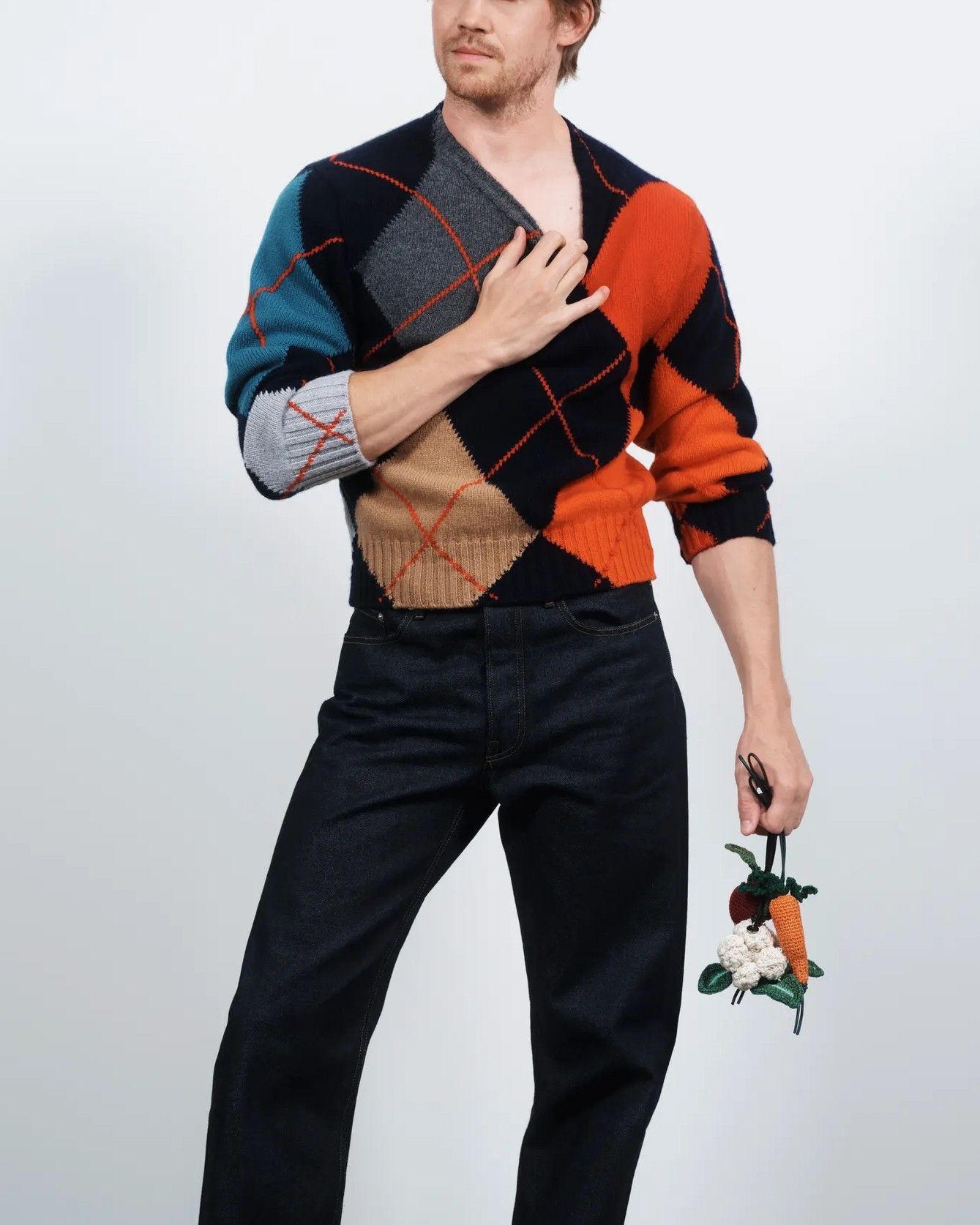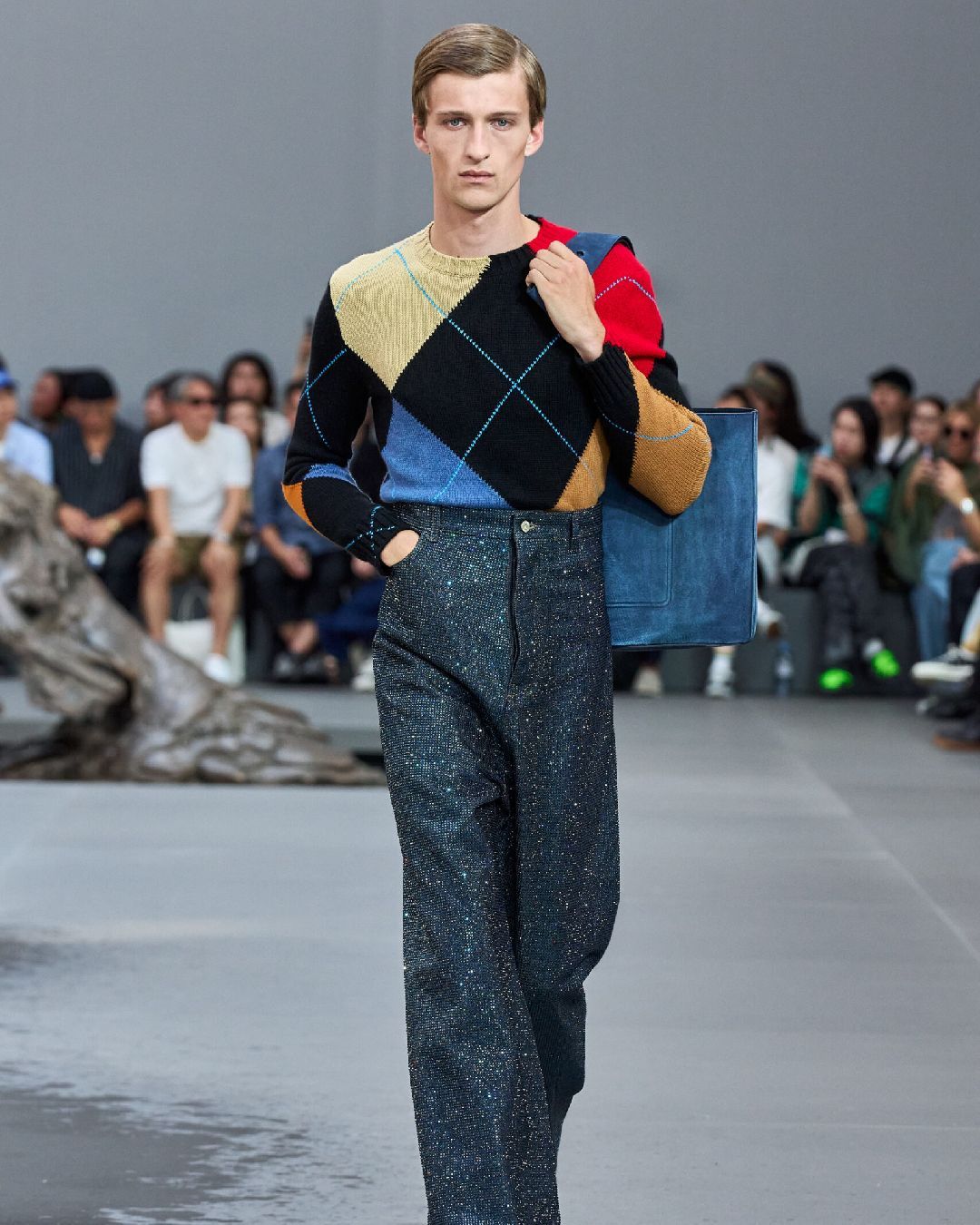
The politics of the waistline Is the high rise already coming back?
Everything has already been done in fashion. Batwing sleeves, bell sleeves, tank tops and lettuce hems, boot cut jeans and skinnies, trench coats and rain capes. A debate that has long been repeated during Fashion Month, the only way for designers to bring something new to the catwalk is to experiment with past silhouettes through the use of modern technology. For SS24, Miu Miu took inspiration from collegiate uniforms, Saint Laurent from the 1967 Safari suit and JW Anderson from the childhood of the creative director. The novelty of these collections was not in the clothes themselves, but in the way they were revisited. At the same time, only two years after the unexpected return of low rise jeans, Prada, Loewe, Rick Owens and Dries Van Noten brought high-waisted trousers into the spotlight. A trend that has been eyed by few on the streets of the fashion city lately, but one that Paris' top designers apparently believe worth trying, high-waisted trousers reflect the economic crisis in luxury with perfect timing. What, exactly, does the waist line have to do with the state of contemporary society? As the designers of recent fashion shows have done, let's take a step back in time.
The cultural significance of the high rise pant
The high-waisted trousers we saw on the Prada and Loewe catwalks this season echo the tailored silhouettes of the Zoot Suits of the 1940s, for their almost comical nature, and of working women during World War II. A shape that fits every body as it sculpts the narrowest part of the waist, in those years it represented a useful style to recognise one's community, in the case of the former, and a functional garment in the case of the latter. Although this line began to become a trend in the 1950s, when Greta Garbo, Audrey Hepburn and Marilyn Monroe cleared it onto the silver screen, and then again in the 1980s with the arrival of the Saint Laurent power suit and Guess bombshell jeans, it has always retained a strongly modest and austere feel.
Directly opposed by nature to the low rise, which debuted in fashion in the 1990s thanks to the creative flair of Alexander McQueen, high-waisted trousers were not created to flatter the wearer's body. While in McQueen's Taxi Driver collection, in which Bumster Jeans were first seen, the designer's main aim was to «elongate the body» as he explained in an interview with the Guardian in 1996, high-waisted trousers were born for workers. Being the age of Marlene Dietrich and the Pachuco, although they have been reinterpreted over the various decades according to the designers and personalities who have worn them, from the innovative Azzedine Alaia and Madonna to the more conservative Giorgio Armani and Lady Diana, these trousers have never really managed to shed their legacy. Appearing in women's wardrobes during a particularly dramatic period for contemporary society, the cultural baggage they have behind them is still cumbersome, despite that vague whiff of quiet luxury that makes every it girl's eyes water today.
Are high rise trousers already making a comeback?
Aside from Miuccia Prada, Raf Simons and Anthony Vaccarello, who were reduced to imitating pinstripe office suits and safari-chic khaki jumpsuits, it has to be said that the designers who brought high-waisted trousers to the catwalk for SS24 had a whale of a time. First and foremost was Rick Owens for the menswear line, who with black, wrap-around leather created sensual shapes, somewhere between galoshes and corsets to form what looked like a centaur's torso. Presented in an apocalyptic context, Owens' show denounced contemporary society, its desire to dance and its fears for the future. «Maybe it's just to celebrate while we can. Is that what people are feeling?» the designer told Vogue. The high-waisted trousers presented by Loewe for SS24 Womenswear also had an ambiguous look, though rooted in creative director Jonathan Anderson's childhood aesthetic. Raised up to below the bust to the point of weirdness, Loewe's tailored trousers appeared slightly unsettling in the way they combined tradition and irony. «Putting playfulness in pragmatism / And pragmatism in playfulness,» read the collection's press release.
In 2023, clothes no longer make the man. Just as the aesthetics of rap artists, in the 1990s strongly connected to the world of street crime, are changing, perhaps the time has also come for high-waisted trousers to explore new aesthetics. To understand whether they will actually succeed in freeing themselves from the demodé historical and socio-cultural context that they embody, we will have to wait until the trousers of Loewe, Rick Owens and Dries Van Noten touch the hips of it girls and it boys in equal measure. What is certain, for now, is that a possible return to the limelight of high-waisted trousers goes hand in hand with an unstable economy, the designers' response to the need to pull the handbrake on their creative flair. While Prada and Saint Laurent have responded in kind measures, taming their silhouettes and forcing them into past references between office and safari-chic, Loewe and Rick Owens have preferred to do it their own way, maintaining the spirit of fantasy that has distinguished them over the years. Comical proportions or not, this winter fashion needed to pull up its trousers.










































